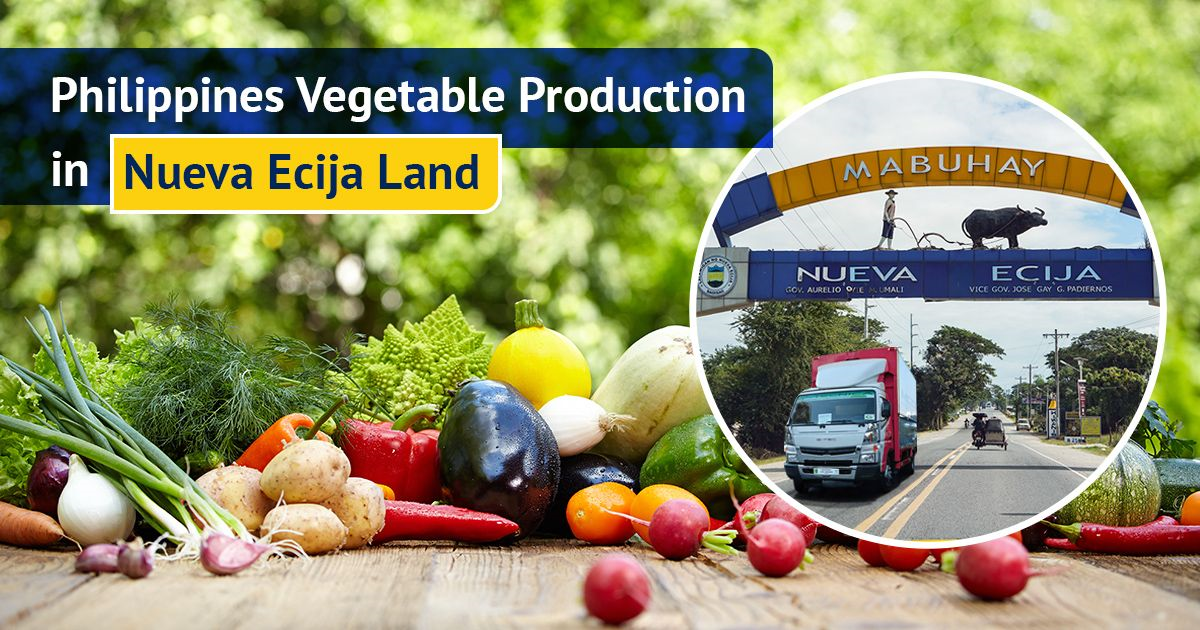
Nueva Ecija is one of the provinces in Central Luzon that is renowned for producing a wide variety of agricultural products. It is nicknamed the “rice granary” of the country due to its massive rice production output. But aside from rice production, the province is also known for vegetable production. However, its primary agricultural product that it is most famous for is onions, where it leads in large-scale onion cultivation.
Get To Know Nueva Ecija Land for Production
According to Guia (2012), the province of Nueva Ecija has a huge agricultural production area covering around 298,742 hectares of fertile lands. These lands are nourished by the waters of the Great Pampanga River and its many tributary streams.
Global Potential in Agriculture
Nueva Ecija land offers extensive opportunities for both local and foreign investors interested in the agro-industry and agricultural trade activities. The province’s vast expanses of arable, irrigated agricultural lands and supporting facilities create an optimal environment for these opportunities. Various agricultural research and development institutions work collaboratively with the provincial government to drive agricultural advancement in the region. Their efforts help secure food supply not just for Nueva Ecija itself, but for the entire country.
Challenges in Vegetable Production
But despite of Nueva Ecija’s huge potential as player in the agricultural sector, according to Llorito (2020), small farmers in Nueva Ecija still face challenges in accessing necessary inputs like seeds and fertilizers which is a common challenge on any agricultural provinces, as well as markets to sell their produce as they lack connections and means to do so. On the other side, buyers such as agribusiness companies and wholesalers struggle to obtain the desired quantity and quality of agricultural products from farmers in a timely manner for processing that they need middlemen to better process their transactions.
Due to these situations and various other dilemmas currently challenging local farmers in Nueva Ecija, there is a possibility that the province could face a shortage in its vegetable supply in the near future. The difficulties small farmers face in getting inputs and finding reliable markets, combined with buyers’ struggles to source sufficient quantities of quality produce, threaten to disrupt the vegetable production and supply chain in the region.
Advancements and Innovation
To address these issues and improve productivity, Nueva Ecija has been embracing agricultural innovations. The use of hybrid seeds and modern irrigation techniques have led to increased crop yields and more sustainable farming practices across the province. Initiatives like the PAG-AHON project specifically focus on enhancing vegetable production in villages (barangays) through technology transfer and training for farmers.
These modernization efforts showcase Nueva Ecija’s commitment to boosting the agricultural output not only of the province but for the entire local economy for agriculture through the adoption of new technologies, methods, and skills development. By equipping local farmers with the latest innovations while tackling infrastructural bottlenecks, the province aims to strengthen its position as a key agricultural hub in the region.
The Supply Chain of Vegetable Production in Nueva Ecija Land
Preparation and Harvest Time
Vegetable production in Nueva Ecija land involves a sequence of steps in the supply chain, beginning with the preparation of the fertile land. Planting a vegetable crop requires various inputs like seeds, fertilizers, pesticides, and labor. After applying these inputs, farmers proceed to the harvesting stage, where the total yields are calculated to analyze the returns or net income from the crop.
Post-Harvest Phase
Post-harvest, proper handling and storage of the harvested vegetable produce becomes crucial. Farmers may choose to sell immediately or store for a few days until prices become more favorable. To make their produce available beyond local markets, transport vehicles are necessary to distribute and bring the vegetables to wider markets.
Retail of Produce Goods
At the market level, selling practices vary – produce can be sold per kilo or per bundle, with payments made either immediately in cash or credit extended for a day or two. Farmers have options to sell directly to agents who bring the produce to marketplaces, or to ‘sakadoras’ – buyers with large storage facilities who then sell to smaller vendors or ‘viajeros’.
What’s Next About Vegetable Production in Nueva Ecija?
The availability of vegetable produce depends on adhering to a vegetable production calendar. However, supply can be limited if crops suffer pest, insect or fungal attacks pre-harvest. Conversely, oversupply situations can arise when produce from other regions floods the same location, or when multiple farmers cultivate the same vegetables, causing prices to drop during peak harvest seasons.
For successful vegetable production in Nueva Ecija, farmers must consider various factors – inputs like land preparation, seeds, fertilizers, pest control and labor; proper harvesting, handling and storage; access to transport; pricing strategies; payment terms; and marketing channels. Careful planning for each season, strategic cost reduction, and awareness of their role in the supply chain are crucial.
Collaboration between vegetable farmers, intermediaries in wholesale markets, local government units, the Department of Agriculture, and agricultural education institutions can address challenges. This includes agreements on marketing and pricing, financial literacy training for farmers, and strategies to manage supply-demand imbalances and infrastructure needs like establishment of well-organized agricultural produce markets.
SEE ALSO:
